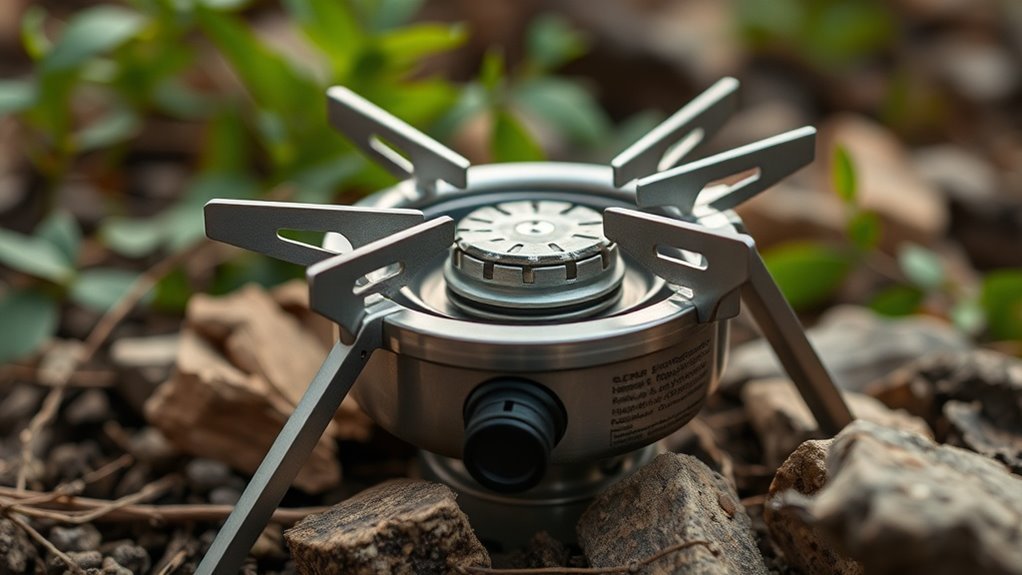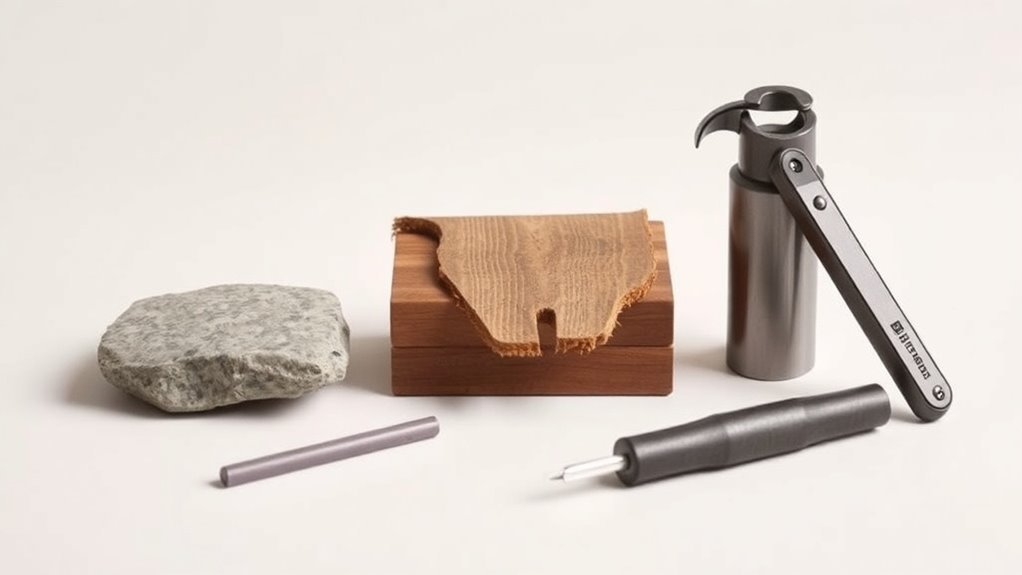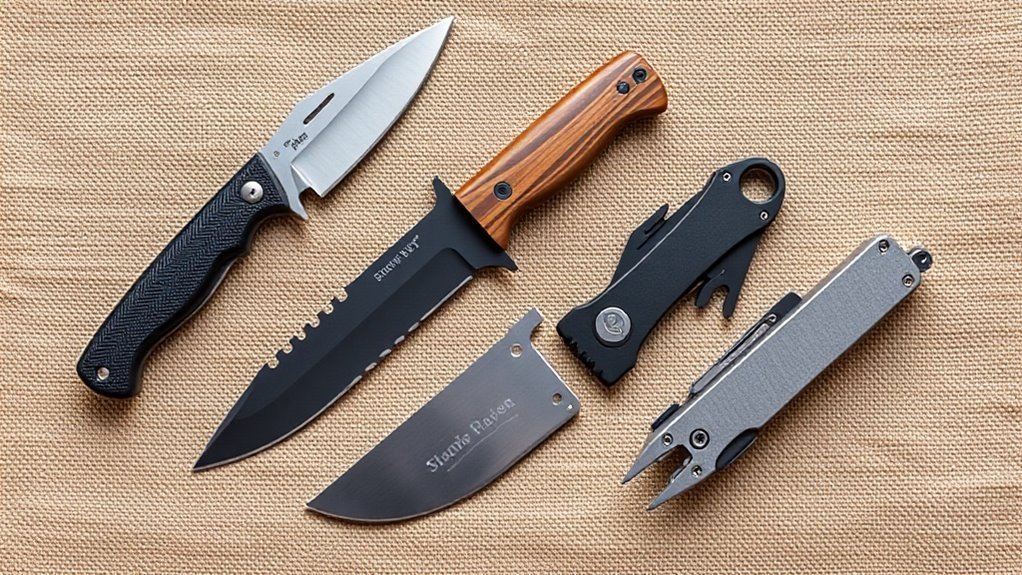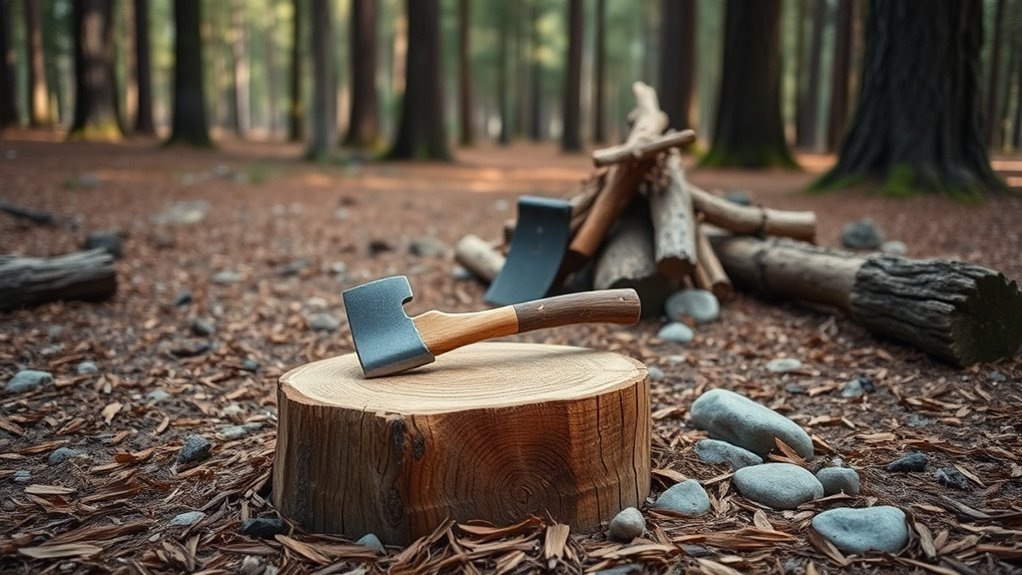Weight Distribution: How to Pack Tools for Hiking
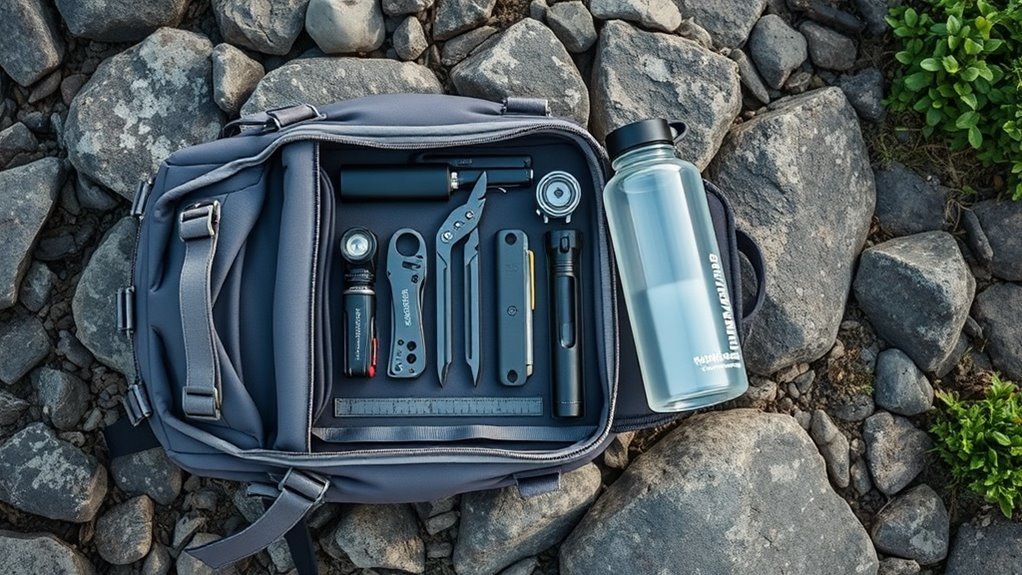
To pack tools for hiking, start by choosing a backpack that fits your torso and has a suitable weight capacity. Place heavy items, like water and cooking gear, close to your back for balance. Distribute lighter gear evenly around heavier items to prevent shifting. Keep frequently used tools in external pockets for quick access. Adjust your straps for comfort and periodically reassess your load to enhance stability. There’s plenty more to contemplate for a successful hike ahead.
Key Takeaways
- Pack heavy items close to your back and higher in the pack for enhanced stability and lower center of gravity.
- Distribute lighter gear around heavier items to minimize shifting and improve overall comfort while hiking.
- Utilize external pockets for rapidly accessible tools, such as water bottles and first aid kits, to enhance efficiency.
- Regularly check and adjust your load balance throughout the hike for consistent comfort and stability.
- Practice packing and test different configurations during short walks to find the most comfortable setup before the real hike.
Understand the Importance of Weight Distribution
When you think about packing for a hike, realizing how crucial weight distribution is can make a big difference in your experience. Properly balancing your load helps prevent strain and fatigue, allowing you to enjoy the journey more.
When packing, keep heavier items close to your back and higher up in your pack; this centers the weight and improves your stability. Distributing lighter gear around the heavier items can help minimize shifting.
Remember to use your pack’s compartments wisely—keep essentials easily accessible without compromising balance. As you walk, periodically check how everything feels; adjusting your load can enhance comfort during the hike.
Taking these steps means less fatigue and more energy to soak in the beautiful scenery on your adventure.
Choose the Right Backpack for Your Needs
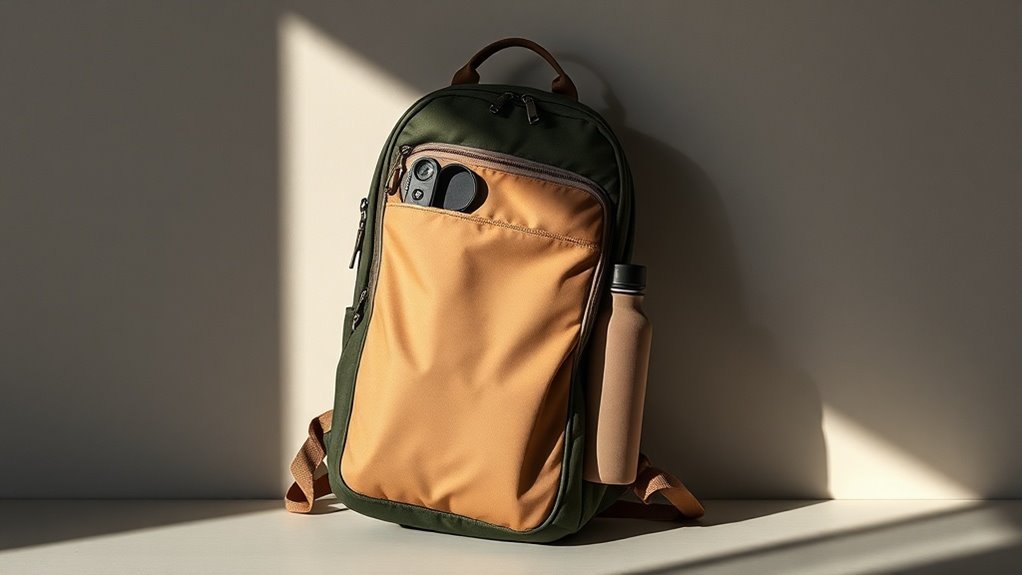
Choosing the right backpack is essential for a comfortable hiking experience.
You need to take into account the size that fits your needs and the features that maximize comfort.
Let’s explore what to look for in a backpack that works best for you.
Backpack Size Considerations
Finding the right backpack size is essential to guarantee a comfortable and efficient hiking experience. An ill-fitting bag can lead to discomfort and fatigue, so consider these aspects when choosing:
- Duration of Trip: Short day hikes need smaller packs, while multi-day adventures require larger sizes.
- Gear and Contents: Think about what tools and supplies you’ll carry; this affects the size you’ll need.
- Body Size and Shape: Make certain the backpack fits your torso length and isn’t too bulky for your frame.
- Weight Capacity: Choose a backpack that can comfortably carry the weight you plan to haul without straining your back.
Features for Comfort
Although you might be tempted to grab the first backpack you see, comfort should be your top priority as you select one suited to your hiking needs.
Look for padded shoulder straps that distribute weight evenly and minimize pressure points. A breathable back panel, ideally with mesh, enhances airflow, keeping you cool on warm trails.
Consider an adjustable hip belt to help stabilize the backpack and shift some weight away from your shoulders. Features like load-lifter straps allow for further adjustments, ensuring a snug fit.
Plus, ample pockets and compartments can make accessing essentials easier.
Pack Heavy Items Close to Your Back
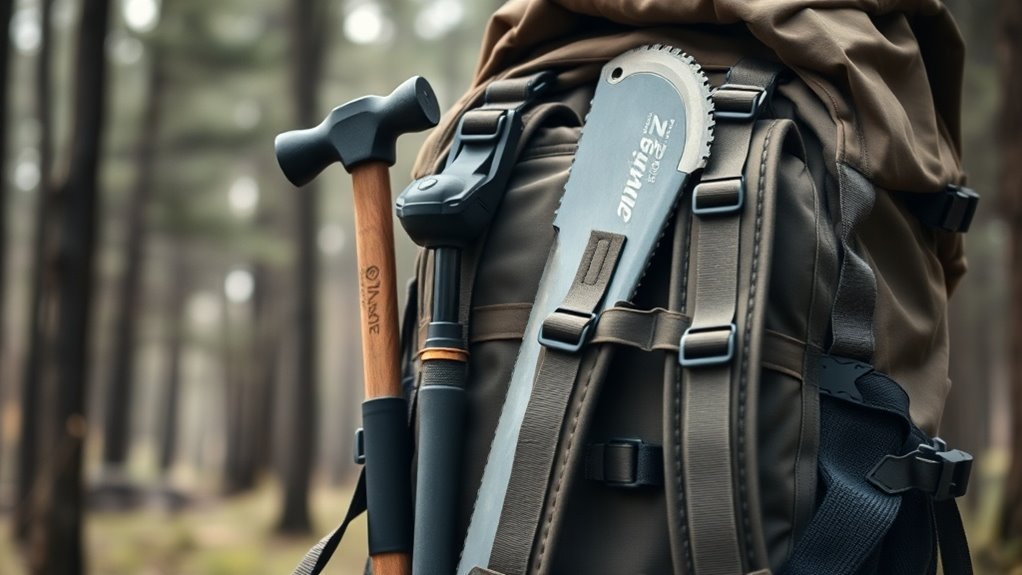
To maintain balance and stability on the trail, it’s essential to pack heavy items close to your back.
When you position heavier tools and gear against your body, it lowers your center of gravity, making it easier to navigate uneven terrain.
Plus, it prevents you from toppling over or straining your back.
Here are some key items to prioritize near your back:
- Water reservoir: Keeps you hydrated without compromising stability.
- Tent or sleeping bag: Ideally lightweight but should be secured close.
- Cooking gear: These can be heavy; placing them snug against your back helps.
- Food supplies: Keep them compact and positioned correctly for easy access.
Balance the Load With Care
Packing heavy items close to your back is a great start, but it doesn’t stop there. To maintain balance, you should distribute weight evenly across your pack. Place lighter items at the top and center, allowing for easier maneuverability. Consider how each item affects your center of gravity as you hike. Proper tool storage techniques can help ensure your tools remain secure during transit, preventing accidents while you’re on the trail.
Here’s a quick guide to help you balance your load:
| Item Type | Placement |
|---|---|
| Heavy Tools | Close to back |
| Medium Items | Mid-level center |
| Light Gear | Top and sides |
| Food & Water | Bottom center |
| Miscellaneous | Side pockets |
Adjust as needed for comfort during your hike. A well-balanced pack makes all the difference.
Utilize Compression Straps Effectively
While you’re hiking, effective use of compression straps can greatly enhance your pack’s stability and reduce unnecessary bulk.
These straps help keep your gear secure, so you won’t have to deal with excessive shifting while traversing trails. Here are a few tips to utilize them effectively:
- Tighten after packing: Once you’ve loaded your gear, adjust the straps to minimize any extra space.
- Layer strategically: Place heavier items closer to your back and use straps to compress lighter items on top.
- Secure side pockets: Don’t forget to use straps to hold your water bottles and other essentials tightly to the side of your pack.
- Adjust on the go: Continuously assess and re-adjust your straps to maintain balance as you hike.
These steps can make a significant difference in your hiking experience!
Keep Frequently Used Items Accessible
When you’re hiking, it’s essential to keep your frequently used items easily accessible.
Identify important tools you’ll need on the trail, and make sure they’re stashed in external pockets for quick access.
This way, you won’t waste time rummaging through your pack when you need something right away.
Identify Essential Tools
To guarantee a smooth hiking experience, it’s essential to identify the necessary tools you’ll need and keep the frequently used items easily accessible.
Consider these important tools to pack:
- Water bottle: Hydration is key, so make this item easy to grab.
- First aid kit: Accidents can happen; having this handy can save time.
- Multi-tool or knife: Great for unexpected needs, from food prep to gear fixes.
- Map or GPS device: Stay oriented; you don’t want to waste time searching for directions.
Use External Pockets
Keeping important tools packed is just the start; how you organize them can make all the difference.
Using external pockets allows you to keep frequently used items within easy reach. Consider packing your map, snacks, and a first aid kit in these pockets so you don’t have to rummage through your entire pack. External pockets can also be great for storing water bottles or trekking poles, giving you quick access when you need them most.
When you organize your gear this way, you minimize downtime and stay focused on your hike. Plus, it reduces the risk of losing smaller items in the depths of your backpack. A little organization goes a long way in enhancing your outdoor experience.
Prioritize Quick Access
Having essential items easily reachable can greatly enhance your hiking experience, as it allows you to access what you need without fumbling through your gear.
To achieve this, prioritize quick access to frequently used tools and items.
Consider keeping these essentials handy:
- Water bottle: Stay hydrated without stopping for a long search.
- Snacks: Fuel up quickly during breaks.
- First aid kit: Be prepared for minor injuries at a moment’s notice.
- Navigation tools: Access your map or GPS when you need to check your route.
Consider the Terrain and Weather Conditions
When planning your hike, the terrain and weather conditions can greatly influence the tools you should pack. If you’re trekking through rocky paths or muddy trails, sturdy footwear and trekking poles become essential. In wet or snowy conditions, packing waterproof gear, like a rain jacket or gaiters, guarantees you stay dry and comfortable.
Here’s a quick reference to help you choose tools based on conditions:
| Terrain/Weather | Recommended Tools |
|---|---|
| Rocky | Trekking poles, gloves |
| Muddy | Waterproof boots, gaiters |
| Snowy | Snowshoes, insulated gear |
| Rainy | Rain jacket, poncho |
| Sunny | Sunblock, hydration pack |
Practice Packing and Adjusting Your Load
Packing tools effectively means considering how they’ll fit and distribute weight on your hike. Before you hit the trail, it’s essential to practice packing and adjusting your load. This way, you’ll find the most comfortable setup, preventing fatigue and ensuring safety.
Here are some tips to help you:
- Balance Weight: Place heavier items close to your back for better stability.
- Adjust Straps: Make sure the shoulder and hip straps fit snugly for even weight distribution.
- Test Different Configurations: Experiment with different placements of gear to see what feels best.
- Replicate Hiking Conditions: Load up your backpack and go for a short walk, mimicking your hiking situation.
Taking the time to practice can make a big difference on your adventure! Additionally, ensuring proper weight distribution can significantly reduce fatigue during your hike, enhancing your overall enjoyment and performance.
Questions
How Do I Determine the Weight Limit for My Backpack?
To determine your backpack’s weight limit, check the manufacturer’s guidelines. Generally, aim for no more than 20-30% of your body weight. Make sure it feels comfortable and balanced when fully packed, adjusting as needed.
What Should I Do if My Backpack Feels Unbalanced?
If your backpack feels like a teetering tower, shift the heaviest items closer to your back. Adjust straps for snugness, and take a moment to redistribute weight, ensuring a balanced load before you hit the trail.
How Can I Reduce the Weight of My Tools?
To reduce your tools’ weight, consider leaving non-essential items behind, opt for multi-tools, and choose lightweight materials. Always evaluate if each tool’s necessary before packing; you’ll appreciate the lighter load during your hike.
Are There Specific Tool Brands Known for Lightweight Options?
Yes, brand names like Gerber, Leatherman, and Black Diamond are known for lightweight tools. They offer compact, durable options that won’t weigh you down, making them perfect for your next hiking adventure. You’ll enjoy the convenience!
How Often Should I Readjust My Pack While Hiking?
You should readjust your pack every hour or whenever you feel discomfort. Regular adjustments can help maintain balance and comfort, making your hike more enjoyable. Listen to your body, and don’t hesitate to stop if needed.
Conclusion
In hiking, proper weight distribution is your key to conquering the trail with ease. By carefully choosing your backpack and packing heavy items close to your back, you’re not just carrying gear; you’re shouldering the freedom of adventure. Don’t forget to balance your load and keep essentials within reach. With practice and attention to the terrain, you’ll turn each hike into a seamless journey. So strap on your pack and let the great outdoors beckon you forward!


